| Columns Retired Columns & Blogs |
Ruark Templar loudspeaker Measurements
Sidebar 3: Measurements
This is a cute speaker. And easy to drive, too, as can be seen from its impedance curves (fig.1). Dropping to just 7 ohms in the midrange and 6.3 ohms in the high treble, with a moderate phase angle above the bass, the Templar will work with low-powered amps, as WP found. The sealed box is tuned to a highish 65Hz—the frequency of the big magnitude peak in the bass—which is about what I expected from the box size. Note the wrinkle at 325Hz, which indicates the presence of a strong cabinet resonance at this frequency. The Big Man didn't hear anything amiss in the midrange, so it's probable that this vibrational behavior looks worse than it sounds.
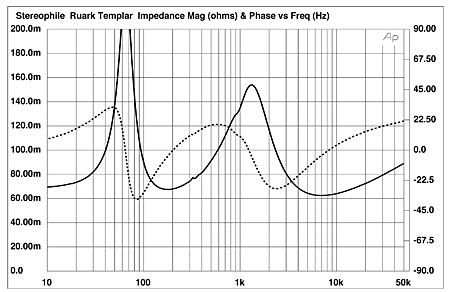
Fig.1 Ruark Templar, electrical impedance (solid) and phase (dashed) (2 ohms/vertical div.).
Fig.2 shows the individual responses of the Ruark's drive-units. The woofer's output is 3dB down at 53Hz, –6dB at 44Hz, but the relatively slow rollout due to the infinite-baffle woofer alignment will result in useful bass available in moderate-sized rooms, especially with a spot of judicious boundary reinforcement. As indeed Wes found.
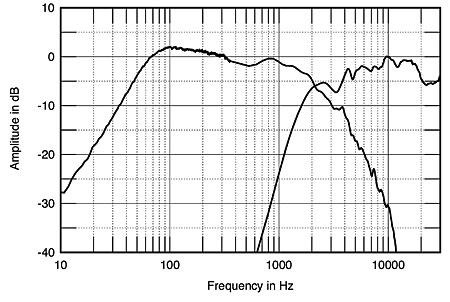
Fig.2 Ruark Templar, acoustic crossover on tweeter axis at 50", corrected for microphone response, with nearfield woofer response plotted below 300Hz.
Higher in frequency, the combination of a second-order electrical low-pass slope and the woofer's natural rolloff gives an acoustic crossover slope that ultimately approximates 21dB/octave. Other than a little glitch almost an octave above the crossover region, the woofer's rolloff is relatively smooth. The tweeter comes in quite sharply, with what appears to be more of a 24dB/octave, fourth-order slope rather than the specified second-order. Its output also seems a little shelved-down in the first octave of its passband.
Fig.3 reveals how these individual outputs sum on the tweeter axis. Uh-oh! While the bass and midrange balance seems quite smooth, there's a classic suckout in the treble crossover region on this axis, due to the two drive-units being acoustically 180° out-of-phase in the region where their outputs overlap. I know WP quite liked some aspects of the Templar's sound on this axis, but it is an unreasonable 25" or so from the floor. (Tom Norton's research has indicated a typical ear height for seated adults of between 35" and 38" from the floor, even when their standing heights are quite different. This is on a typical sofa or easy chair; a canvas "director's chair" places the ear between 41" and 44" from the floor.)
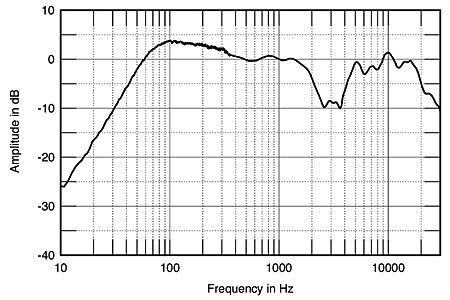
Fig.3 Ruark Templar, anechoic response on tweeter axis at 50", corrected for microphone response, with nearfield woofer response plotted below 300Hz.
So where is the flat response? Fig.4 shows how the Templar's response changes as the listener moves above or below the tweeter axis. (Just the differences are shown in this graph, which means that the tweeter-axis response appears as a perfect straight line. This does not mean the speaker's response is similarly flat!) It should be clear from fig.4 that the crossover suckout fills in both above and below the tweeter axis. Accordingly, I repeated my measurement about 31" from what would have been the floor had I not had the speaker mounted on my loudspeaker-measuring turntable. The response on this axis (fig.5) is impressively flat, evidencing just a slight downward tilt. Nice.
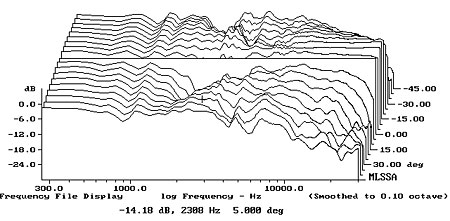
Fig.4 Ruark Templar, vertical response family at 50", normalized to response on tweeter axis, from back to front: differences in response 45°–5° above tweeter axis; reference response; differences in response 5°–45° below tweeter axis.

Fig.5 Ruark Templar, anechoic response on optimal axis at 50", averaged across 30° horizontal window and corrected for microphone response, with nearfield woofer response plotted below 300Hz.
As might be expected from its tiny baffle dimensions, the Templar also offers exemplary lateral dispersion. This can be seen in fig.6—again, just the response changes are shown—the highs progressively rolling off with increased off-axis angle. The woofer at the top of its passband is slightly more directional than the tweeter at the bottom of its passband; experimenting with toe-in will allow the Templar's owner to fine-tune the speaker's balance through its woofer/tweeter transition region.
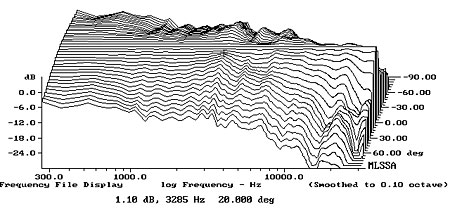
Fig.6 Ruark Templar, horizontal response family at 50", normalized to response on optimal axis, from back to front: differences in response 90°–5° off-axis; reference response; differences in response 5°–90° off-axis.
In the time domain, the Templar's step response (fig.7) reveals that the speaker is not time-coherent, despite its use of an angled front baffle. While both the woofer and tweeter are connected with positive acoustic polarity, the time delay between the units, due both to the tilted baffle and the crossover topology, tilts the main response lobe upward; this is desirable in such a short floorstanding design.
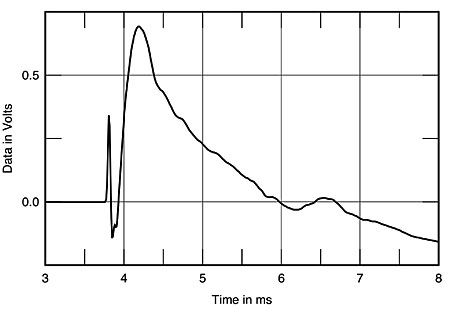
Fig.7 Ruark Templar, step response on optimal axis at 50" (5ms time window, 30kHz bandwidth).
Finally, the Templar's cumulative spectral-decay, or waterfall, plot (fig.8) reveals a generally clean decay in the upper treble and midrange, though the mid-treble has a bit of energy overhang evident, this probably due to resonant modes in the paper-cone woofer.
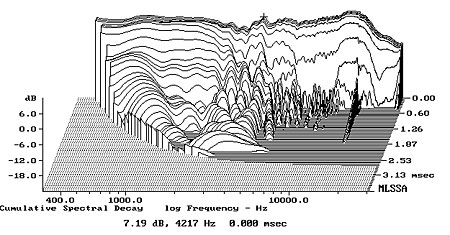
Fig.8 Ruark Templar, cumulative spectral-decay plot at 50" (0.15ms risetime).
All in all, the measurements suggest the Templar to be a well-executed piece of loudspeaker engineering.—John Atkinson
- Log in or register to post comments




































